- Scientific name: Nabalus serpentarius
- Species of Greatest Conservation Need (MA State Wildlife Action Plan)
- Endangered (MA Endangered Species Act)
Description
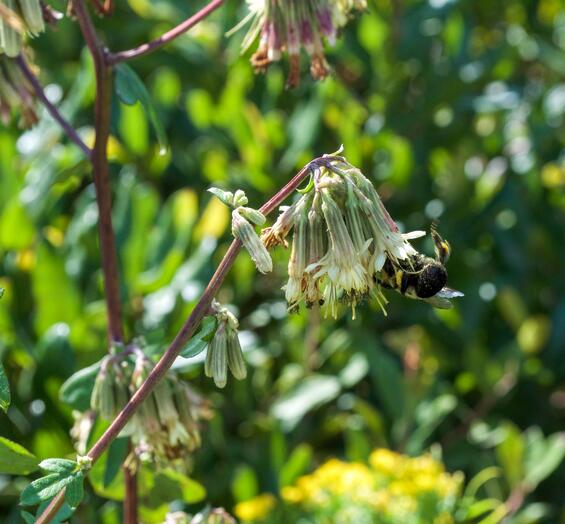
Lion’s foot is a robust perennial in the aster family (Asteraceae) that grows to 1.9 m (6 ft) tall. Its principal habitats are sandplain grasslands and heathlands, and it may also occur on rocky slopes, along roadsides, and in other disturbed habitats. The coarse stems usually have some purple coloration and exude a milky sap when damaged. Leaves are alternate and variable in shape, with some that are deeply and irregularly lobed (particularly on the lower portion of the stem). The upper quarter or third of the plant is a branched inflorescence with flower heads arranged in small clusters near the branch tips. The flower heads (capitulae) in the Aster family consist of bundles of tiny flowers subtended by the involucre, a structure composed of small bracts. In lion’s foot, the capitulae have 8 to 14 flowers with yellow to cream-colored corollas (sometimes with pink or green undertones). Individual flowers are 8-14 mm (0.03-0.05 in) long with the lower half fused into a tube. Each flower produces a single achene (a dry, one-seeded fruit) topped by a pappus (a tuft of long, unbranched bristles) that aids in wind dispersal. The involucre consists of two whorls of green bracts. The inner whorl is comprised of approximately eight lance-shaped bracts, 8-14.5 mm (0.03-0.05 in) long; the outer whorl has five to nine much shorter (1.5–3 mm [0.06-0.12 in]) bracts.
A technical manual should be consulted to confirm the identification of lion’s foot. The following characters are useful: hairy involucral bracts, achenes round or angled in cross-section, and 8-14 flowers per capitulum.
Wild lettuce species (Lactuca spp.) share some features with lion’s foot, including large size, lobed leaves, and milky sap. The wild lettuces differ in having flattened achenes. Additionally, common yellow wild lettuce (L. canadensis) has upright flower heads. Yellow-flowered forms of blue lettuce (L. biennis) have more than 15 flowers per capitulum. Lion’s foot is the only Nabalus species in Massachusetts that commonly has hairy involucral bracts. However, some botanists assert that the hairs are sometimes absent. Leaves in Nabalus species are highly variable in shape and amount of lobing (if any) and are not diagnostic. Caution is needed to distinguish lion’s foot from N. trifoliolatus at sites where both species occur.
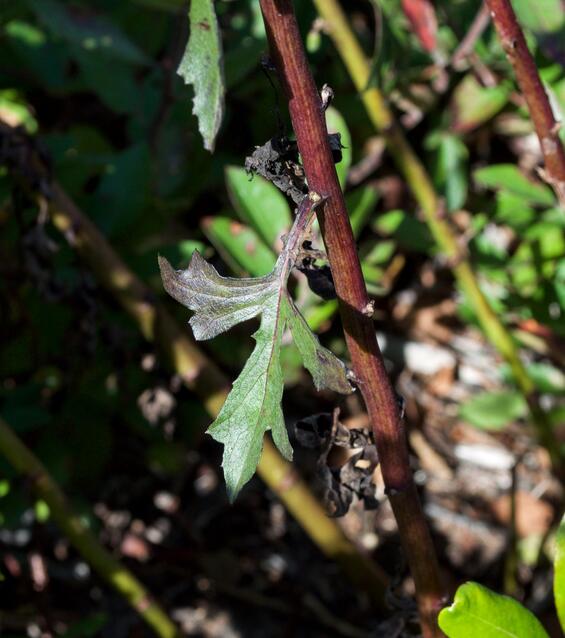
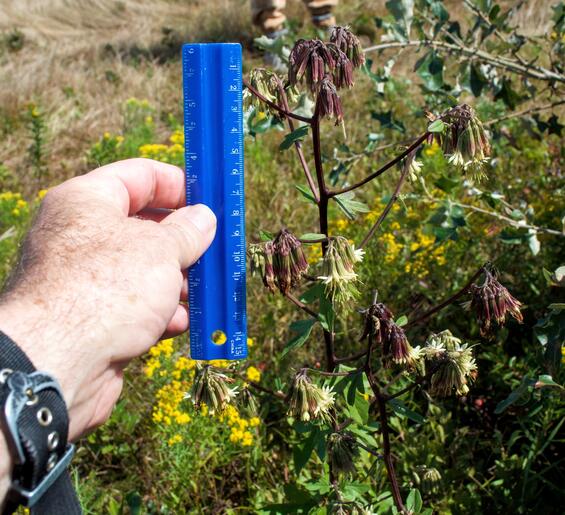
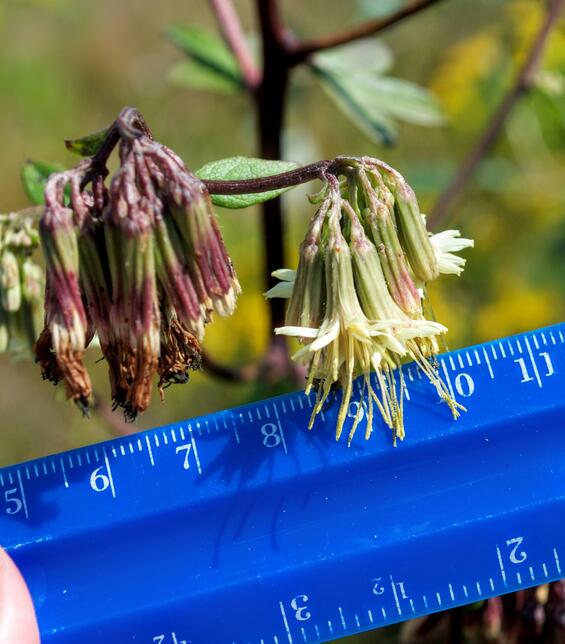
Life cycle and behavior
This is a perennial species.

Population status
Lion’s foot is listed under the Massachusetts Endangered Species Act as endangered. All listed species are protected from killing, collecting, possessing, or sale, and from activities that would destroy habitat and thus directly or indirectly cause mortality or disrupt critical behaviors. The MassWildlife’s Natural Heritage & Endangered Species Program (NHESP) has 35 records from 8 counties: Dukes, Essex, Hampden, Hampshire, Middlesex, Nantucket, Norfolk, and Worcester. Seventeen of these records have been observed within the last 25 years. Most of the historic inland populations were lost during the 20th century and the few remaining extant populations are concentrated on Martha’s Vineyard and Nantucket. Massachusetts populations tend to be small (< 20 plants) and sparse (widely scattered rather than dense patches). Vegetative reproduction has not been convincingly documented and it is likely that local spread and maintenance of populations is dependent on reproduction from seed.
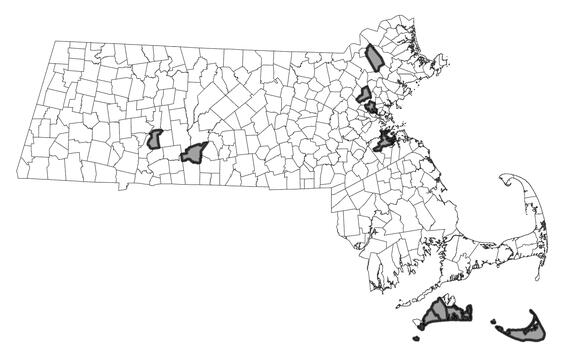
Distribution in Massachusetts
1999-2024
Based on records in the Natural Heritage Database
Distribution and abundance
Lion’s foot occurs from Florida west to Mississippi, Tennessee, Kentucky, and Ohio, north to New Hampshire.
Habitat
Lion’s foot generally occurs in dry soils on sites with a history of fire or other disturbance. Most extant populations are in open habitats in coastal sand barrens; some populations occur in open-canopy woodlands. Inland records are often associated with roadsides, trail edges, utility rights-of-way, railroad grades, and dry, sandy fields.
Healthy habitats are vital for supporting native wildlife and plants. Explore habitats and learn about conservation and restoration in Massachusetts.
Threats
Open, upland habitat suitable for lion’s foot is created and maintained by disturbance. The historical decline documented for this species is probably related to fire suppression and reforestation following agricultural abandonment. Some historical stations have been lost to development. Remaining populations are generally threatened by succession and some populations are managed by mowing and controlled burning.
Conservation
Heavy deer browsing has been noted in some populations and exclosures could be beneficial in areas with large deer populations. All active management of rare plant populations (including invasive species removal) is subject to review under the Massachusetts Endangered Species Act and should be planned in close consultation with the MassWildlife’s Natural Heritage and Endangered Species Program.
Contact
| Date published: | May 6, 2025 |
|---|